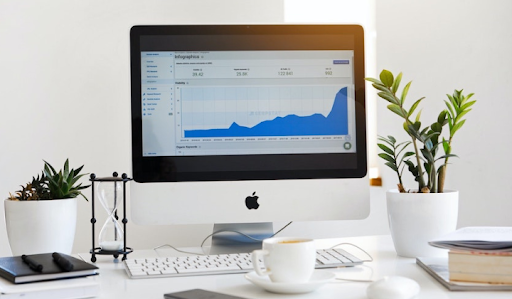Topic: Valuations
Desktop Valuations -
A Surveyor's take
15 November 2021
Author: Richard Peck
5 min read
I’ve been asked a lot lately by both clients and prospective clients about Desktop Valuations.
There seems to be some confusion about what they are, what they involve and in some cases what they mean for the housing transaction.
So here is a surveyor's take…
The background
For some time, there has been a desire from UK mortgage lenders to speed up the application process - a shift away from physical property inspections on lower risk cases is seen as a key move in achieving this.
The pandemic, the closing of the property market and the social distancing measures that followed, created a need for remote valuations to become more commonplace. The industry adapted quickly, and many large, national surveying firms had systems in place to produce desktop valuations a few weeks into the first national lockdown. The ‘Genie is out of the bottle’ and desktop valuations are now here to stay.
What are desktop valuations?
As the name suggests, it’s a valuation prepared from a desk, without the need for a full inspection of the property.
Desktop valuations are completed by RICS Registered Valuers who use publicly available information to assess the value of a home. This includes sourcing information and characteristics about a property from the Land Registry, property portal archives, street-view and satellite imagery, followed by analysing the data and comparing to completed sale prices of similar properties in the area to finalise a valuation figure. Sometimes these valuations are carried out with the aid of an index-linked, Automated Valuation Model (AVM) which can estimate values based on how much house prices have either increased or decreased in a given area or postcode, since a previous Land Registry entry.
When can they be used?
They are typically used for low-risk properties such as those under 80% loan to value (LTV) and where centralised property and location checks have identified no significant risks for issues such as flooding or subsidence.
Desktop valuations are not suitable for all properties. A desktop survey is recommended for standard property types (normal size, common design) that are in reasonable condition and have not been substantially altered, extended or refurbished. They are not typically suitable for higher value properties, larger dwellings, properties with land, some flats and properties which are of non-standard construction or of unusual design.
Are desktop valuations reliable?
The answer is sometimes yes, sometimes no. As the surveyor will not benefit from collecting their own data from a physical inspection of a property, the reliability of a desktop valuation will largely depend on the quality and accuracy of the online data available to the RICS surveyor at the point where they complete the report.
Desktop valuations are partly based on assumptions about a property – surveyors will assume the property is in average condition and of standard spec. This can mean that any premiums paid for properties which are finished to a high standard, may not be fully reflected in the value.
The property has been extended, will this be factored in?
Desktop valuations are based on the data that is available to the surveyor at the point of doing the research.
So, if you are mortgaging a home and have recently extended, or if you’re buying a property that was never marketed online, then there may be no evidence of the extension available to the surveyor in the data sources they check.
However, if the application is for a home purchase and the property has been marketed online, then the valuing surveyor will (should) have spent time analysing the sales particulars and noticed that the property has been extended.
Depending on each lender’s own criteria, if the property has been extended by a certain percentage, altered or significantly modernised, then the desktop valuation should be upgraded. In my experience of surveyors carrying out such valuations, for simple single-storey extensions where there is good comparable evidence of other similarly extended properties, then the surveyor will usually provide a desktop value.paid for properties which are finished to a high standard, may not be fully reflected in the value.
The desktop valuation is lower than the purchase price we have agreed – what are our options?
This is not an uncommon occurrence for these types of valuation, so initially you do not need to panic. As mentioned above, desktop valuations will make certain assumptions about the property, which could be incorrect.
If you find yourself in this situation you have a few options: -
You could accept the desktop valuation figure and make up the shortfall between the money being lent by the mortgage provider and the higher agreed purchase price. In reality not many homebuyers are going to be in a position to do this and those that are, should instruct a private full RICS Valuation to ensure for their own peace of mind, that they aren’t overpaying for the property.
You accept the desktop valuation report and try to renegotiate the agreed price with the vendors of the home, on the basis of the lower valuation figure. In the current climate, which is generally considered to be a ‘sellers’ market’ this could be tricky.
Which leaves us with the most commonly used option...
You request that the valuation is upgraded to a full valuation, with a physical inspection. Some mortgage lenders do this automatically, but with others you may have to push and could be required to pay the surveying company’s valuation fee.
I’m having a desktop valuation on a property I’m purchasing; do I need to arrange my own survey?
Yes.
I’ve always urged house purchasers not to rely solely on a lender’s mortgage valuation – they are for the lender’s benefit only and are essentially a confirmation that the amount being lent will likely be covered by the sale of the property if a loanee were to default on their repayments. In recent years, lenders have wanted to streamline processes, so there has been a trend in simplifying the reports and in some cases not even providing the purchasers of homes a copy.
It’s always therefore been really important for homebuyers to instruct a qualified RICS surveyor to carry out a more in-depth Home Survey or Building Survey, however, this is even more pertinent now, where an increasing number of lenders are relying on a Desktop or AVM valuation and not the eyes, ears and noses of a surveyor (yes, we use our noses too!).
If you’re buying a home, get in touch with your local, independent surveying firm and instruct them to carry out a physical inspection of the property - this should be either a RICS Level 2 Home Survey (formerly known as Homebuyers Survey) or a RICS Level 3 Building Survey. These can also usually be provided with ‘physical’ RICS Red Book valuations too for added peace of mind.
If you’re property-hunting in Leamington Spa or surrounding areas, please get in touch with us at Richard Russell Surveyors and we’ll be happy to discuss the right survey for you and your property.
Further insights
3 July 20204
15 November 2021




